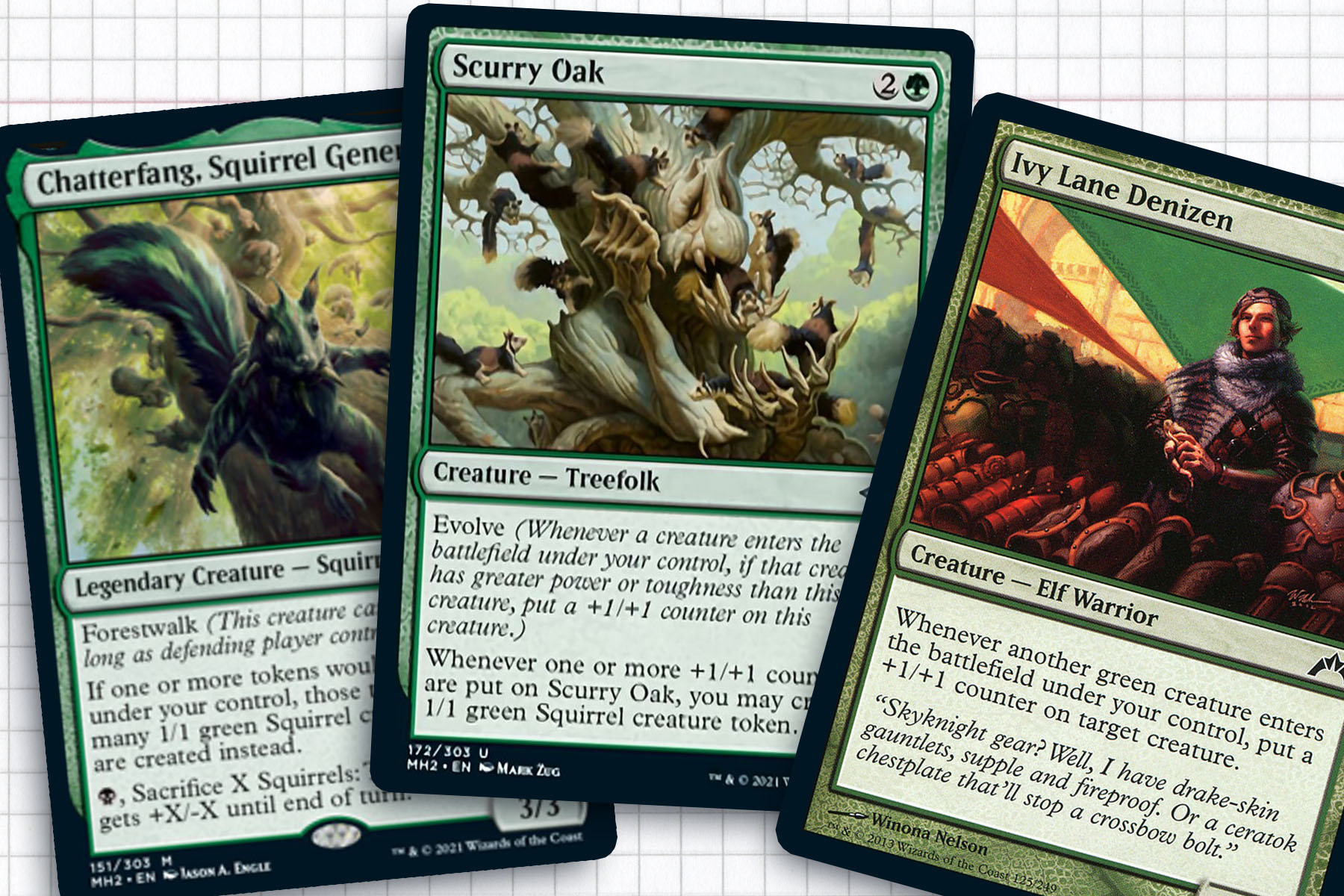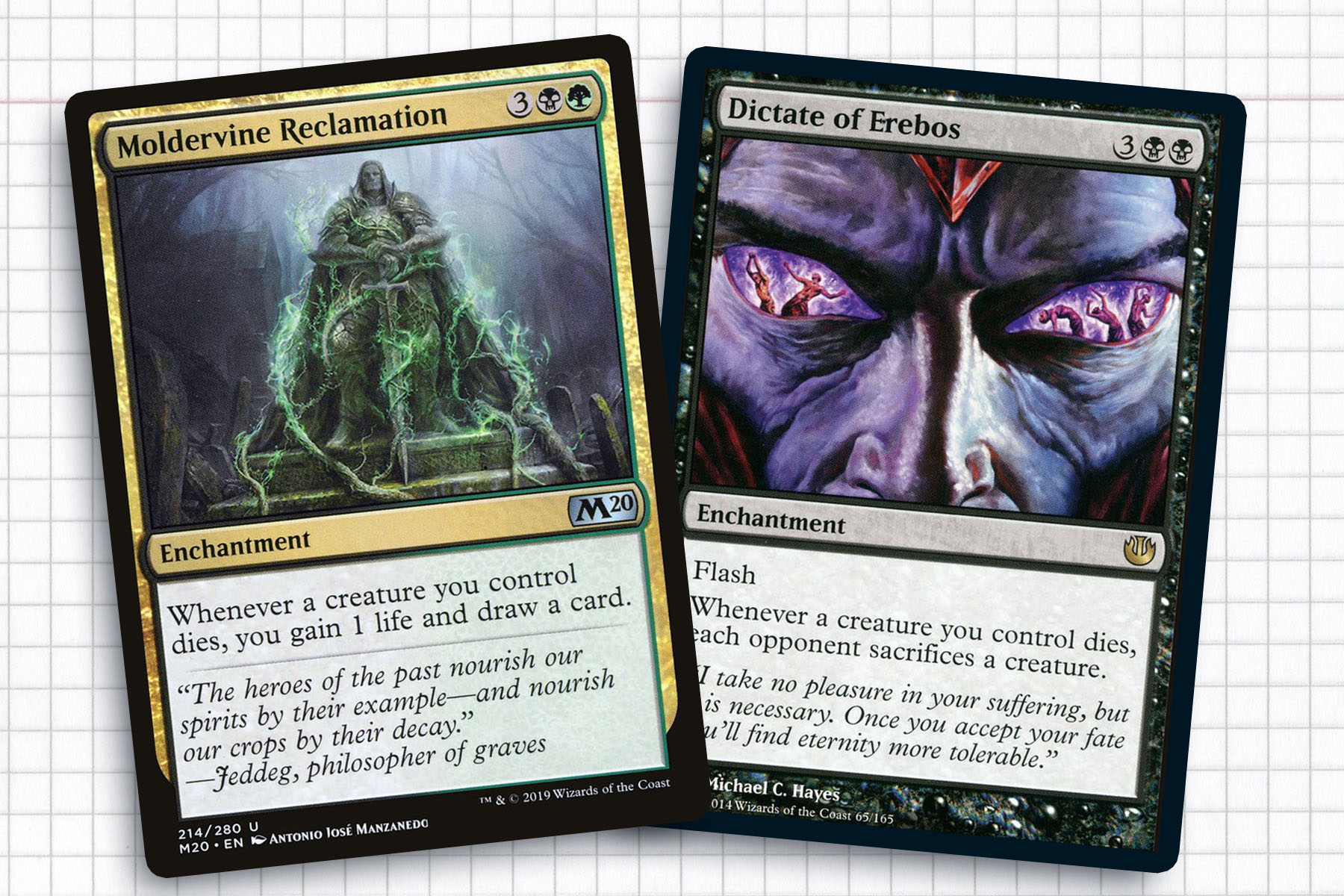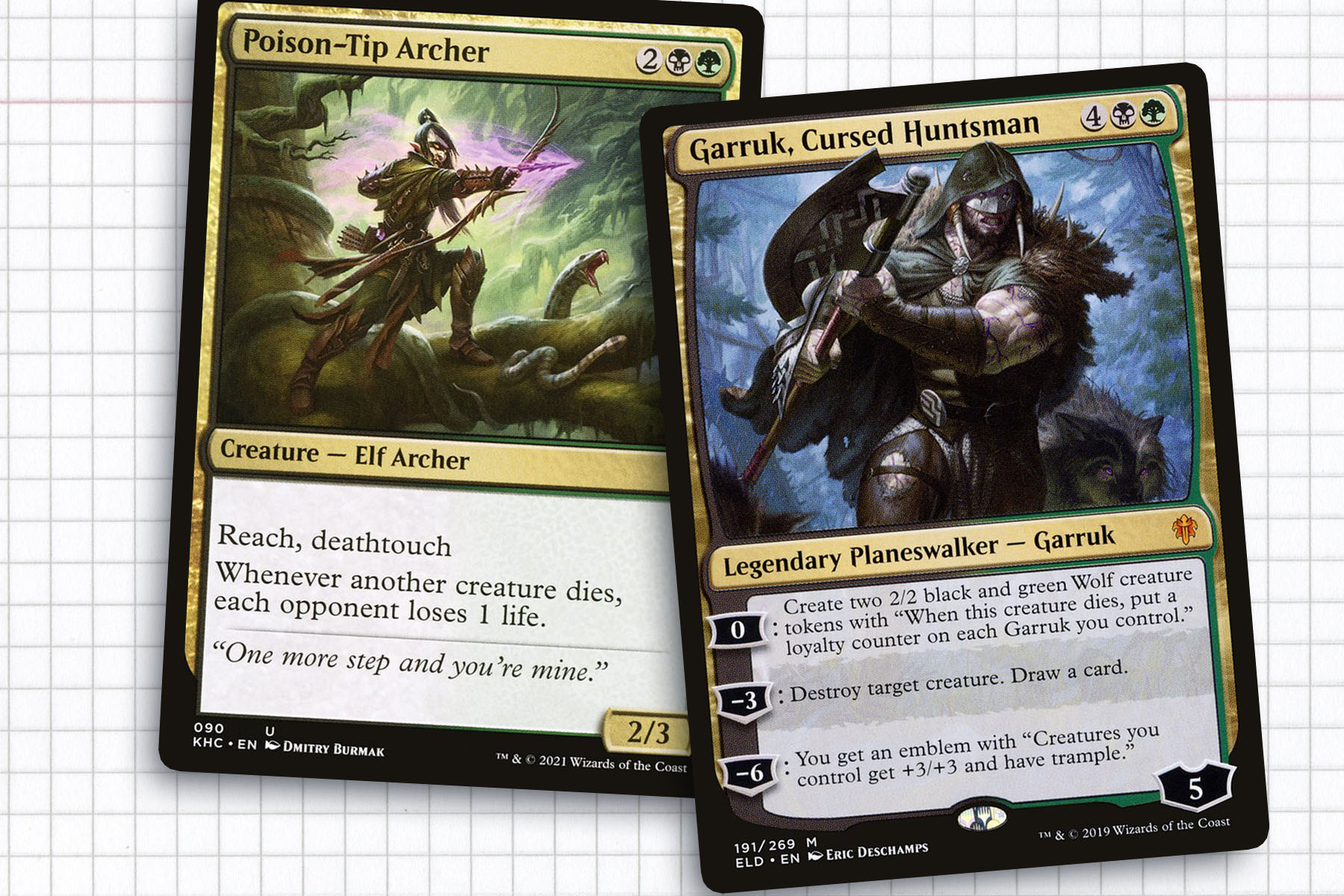Modern Horizons 2 is imminently upon us and I have to admit, I had set my hopes pretty high in anticipation of this set. The previous Modern Horizons brought a good deal of cards that piqued my interest at the time. Morophon, the Boundless redefined my Eldrazi deck following their printing, Hogaak, Arisen Necropolis inspired a Dollar General deck, and I often find myself looking for a reason to go back to cover other legends. What I didn’t expect was that the set was going to completely invigorate the squirrel archetype.
In the past I have written about my foray into the deck, trying to make it work despite having no discernible direction to go at the time. But now we have received Chatterfang, Squirrel General, who gives us a very specific direction to follow. I see potential for them to even be placed into a deck with an expanded color identity to be a hidden general. For today, I would like to dive into what speaks to me about Chatterfang. I believe the deck can be a very fun tokens matter build, while taking cues from legendary creatures of the past. And hopefully the theory crafting will lead into an execution of a very fun deck.
General: Chatterfang, Squirrel General
Creatures: Avenger of Zendikar, Caller of the Claw, Catacomb Sifter, Deep Forest Hermit, Drey Keeper, Giant Adephage, Graveshifter, It of the Horrid Swarm, Ivy Lane Denizen, Izoni, Thousand-Eyed, Mazirek, Kraul Death Priest, Nut Collector, Pitiless Plunderer, Poison-Tip Archer, Scurry Oak, Sifter of Skulls, Smothering Abomination, Species Specialist, Squirrel Mob, Squirrel Sovereign, Toski, Bearer of Secrets, Underworld Hermit, Verdant Force, Vile Redeemer
Artifacts: Akroma’s Memorial, Commander’s Sphere, Conjurer’s Closet, Golgari Signet, Maskwood Nexus, Mind Stone, Moss Diamond, Swiftfoot Boots, Talisman of Resilience
Enchantments: Beastmaster Ascension, Cryptolith Rite, Deathreap Ritual, Dictate of Erebos, Moldervine Reclamation, Squirrel Nest, Squirrel Sanctuary, Underworld Connections
Planeswalker: Garruk, Cursed Huntsman
Instants: Nature’s Claim, Plumb the Forbidden, Return of the Wildspeaker, Second Harvest, Tragic Slip, Verdant Command, Village Rites
Sorceries: Acorn Harvest, Bala Ged Recovery, Caravan Vigil, Casualties of War, Chatter of the Squirrel, Chatterstorm, Corpsehatch, Crush of Wurms, Culling Ritual, Ezuri’s Predation, Primal Growth, Spider Spawning, Traverse the Ulvenwald
Lands: 12 Forest, 7 Swamp, Command Tower, Darkbore Pathway, Emergence Zone, Evolving Wilds, Field of Ruin, Ghost Quarter, Golgari Rot Farm, Grim Backwoods, Guildless Commons, High Market, Hissing Quagmire, Llanowar Wastes, Mutavault, Overgrown Tomb, Spawning Bed, Temple of Malady, Terramorphic Expanse, Witch’s Clinic

If You Love Tokens
Chatterfang is very clearly a tokens deck—and if I have learned anything from Ghave, Guru of Spores or Prossh, Skyraider of Kher, token decks often accidentally become combo decks without warning. What I appreciate about Chatterfang‘s design is that they take the handicap of squirrels not having a wide range of token generation and simply ride the coattails of other token makers to fill out the tribe. This lead to some weird flavor moments like Pitiless Plunderer tossing out cash and rodents, or Spider Spawning becoming Squirrel Swarm. Even before Maskwood Nexus makes everything a squirrel, I think there is a good chance that we can very easily see Chatterfang making extensive use out of their sacrifice ability.
I had leaned into the Selesnya color identity in the past to take advantage of white’s token favoring tools, but this deck’s Golgari color identity opens us to some of my pet cards: Catacomb Sifter and Smothering Abomination. Additionally, I have been looking for a place to slot in a Species Specialist for quite some time, but nothing felt like the right fit until this deck promised such a robust sacrifice plan.
Finally, there is the combo of Ivy Lane Denizen and Scurry Oak, which unchecked could create the desired amount of squirrel tokens you need to win. I even know that it’s a good combo, having seen MTG Goldfish play with it in Modern this week. It helps that Ivy Lane Denizen triggers evolve, but this is where Caller of the Claw and Vile Redeemer can allow you to execute this combo on the end step before your turn if the circumstances call for it.

Surviving to the Endgame
With the right opening hand, this deck could very well go off and win a game on turn six. I honestly don’t have enough faith in the consistency of what I have drawn up here to bank on that happening though. While we could strike early, I want to be prepared to play the long game and not raise suspicions.
One of my goals with this deck was to not fall prey to poor card advantage, which is why we have ample outlets on top of Smothering Abomination, in the form of Izoni, Thousand-Eyed, Moldervine Reclamation, Toski, Bearer of Secrets, and Underworld Connections. Additionally, Plumb the Forbidden is a card that I remember seeing during Strixhaven previews, but immediately wrote the card off, because I didn’t believe it to be better than a Sign in Blood or Read the Bones in most situations. This seems like a great time to give Plumb a try.
My hope is that with enough card advantage and ample amounts of death triggers to benefit from our general’s ability, we should be able to maintain a very healthy board presence before turning the corner and overwhelming our opponents. I believe that plans like the aforementioned Oak/Denizen combo and Cryptolith Rite feeding into Chatterstorm can keep a healthy flow of squirrels coming into play and allow us to maintain some healthy card advantage, while reducing our opponents’ impact on the board with Casualties of War, Dictate of Erebos, and Ezuri’s Predation. With enough set up, we’ll be able to choose when we want to close out the game.

Overwhelming the Enemy
In my own experience, the threshold for a spell being a finisher can be rather nebulous. It seems practical to assume that if we build up the right board state, having an Akroma’s Memorial or Beastmaster Ascension in play means that we can finish players off rather quickly. Thematically, I like the idea that Garruk, Cursed Huntsman’s emblem and Return of the Wildspeaker can also work in tandem to threaten the table through traditional means as well.
As I’ve learned playing with Drana, Kalastria Bloodchief, you can always aim the ability at the user. This means that with the right boosts to our general, Chatterfang can pump themselves to become a general damage threat. I hate to assume this is a realistic game plan for most games, but with a dream board of plenty of lords and some Ivy Lane Denizen triggers going in Chatterfang’s direction, I would keep this trick in my back pocket.
My last intentional path to victory comes in the form of Mazirek, Kraul Death Priest or Poison-Tip Archer being in play to see Chatterfang sacrificing creatures en masse. This should allow us to either win through a couple dozen arrows or a horde of massive creatures.
Concluding Thoughts
To be honest, this deck started out as a bit of a joke that I assumed I could assemble a reasonable pile of 99 cards before seeing everything the Modern Horizons 2 had to offer. I wasn’t fond of the color identity at first, feeling like it was a violation of what I had envisioned for the tribe. But after finally fleshing out the philosophy of the deck and drawing up a few paths to victory, I feel pretty confident that this deck has something going for it that is certainly worth exploring and innovating on.
I am going to explore this strategy before I get too ambitious about other builds. But as I alluded to before, Chatterfang seems like a wonderful support card in decks with larger color identities. In a Ghave, Guru of Spores deck, using Eladamri’s Call or Congregation at Dawn to fetch the squirrel out, you could certainly expand what they are capable of with Cathars’ Crusade and True Conviction.
I have certainly wanted to see squirrels representation more within the game, but this is honestly more than I could have ever hoped for when I was building Trostani, Selesnya’s Voice all those years ago. I look forward to being able to construct this deck once the set is officially out. Equally, I’m excited to tune the list and find even more hidden gems. Until next time, thanks for reading.
Ryan Sainio is a Graphic Designer who writes about EDH and the EDH community. He has been playing Magic: the Gathering since 7th Edition in 2002 and values flavorful and fun gameplay over competitively optimized decks.

